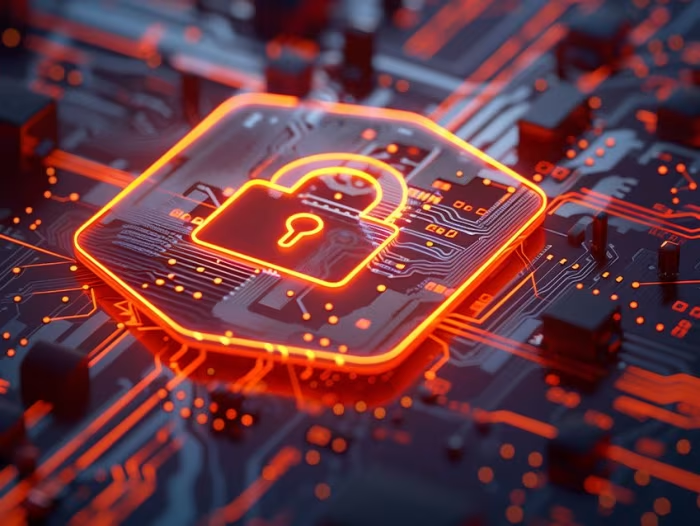Resource / Online Journal
Essential Guide to NIST Identity and Access Management Best Practices
Know more about NIST Identity and Access Management, also known as the golden standard, to get a robust cybersecurity IAM system to keep your organization safe in this growing cyber threat landscape.
Published on Sep 3, 2025

Introduction to Identity and Access Management
Identity and Access Management (IAM) provides security, privacy, interoperability, and usability. It ensures that both people and devices have the right access to resources at the right time with robust cybersecurity risk management.
The National Institute of Standards and Technology (NIST) has long enabled the growth of IAM, advancing the field through rigorous research and continually evolving standards. When IAM is implemented effectively, organizations gain vital oversight of user identity, digital identities, and access privileges.
Thus, maintaining proper identity management is crucial in the face of increasingly complex cyber threats. NIST, when implemented in IAM, forms an essential foundation for any enterprise looking to secure sensitive assets and ensure compliance in today’s cyber landscape.
NIST Cybersecurity Framework
The NIST Cybersecurity Framework (CSF) offers a model for organizations to manage cybersecurity risks in a structured way that is also business-aligned. There are five functions: Identify, Protect, Detect, Respond, and Recover. By aligning security priorities with business objectives, organizations can address the full lifecycle of risk, from asset discovery to rapid recovery.
Crucially, NIST’s suite of standards provides granular guidance on building control access. It provides digital identity guidelines, which help us perform risk assessments and implement privileged access management controls at all organizational levels.
Digital Identity NIST Guidelines
The National Institute of Standards and Technology lays out a comprehensive set of guidelines for digital identity, addressing everything from authentication to lifecycle management. These guidelines prescribe how to verify users’ identities (identity proofing), determine effective authentication mechanisms, and guide the management of digital credentials.
The adoption of Role-Based Access Control (RBAC) and privilege management supports the principles of least privilege, limiting access to only what is required for each user’s role. By implementing these digital identity guidelines, organizations increase assurance. It only verifies individuals with appropriate access to sensitive assets, reducing both insider and external threats.
Access Controls and Identity Proofing
Access control policy guards the gates to critical assets and sensitive data. While identity proofing, this ensures authorized users are who they claim to be before those gates open. NIST also asks for the need of layered controls.
This layer also includes multi-factor authentication (MFA) and the principle of least privilege access. Recent guidance recommends more dynamic approaches to identity management. For example, approaches with attribute-based controls and adaptive authentication.
It’s also essential for organizations to keep access policies current with regular reviews of control settings. Along with credential validity, one of the NIST best practices for staying ahead of evolving threats is account credential lifecycle management, protecting critical assets.
Critical Infrastructure Protection
Securing critical infrastructure goes hand-in-hand with robust IAM. As cyberattacks increasingly target essential industries, protecting the underlying systems is a national and corporate priority. NIST’s access management standards call for continuous monitoring, real-time incident response, and risk-based access controls.
Regular risk assessments and penetration tests, guided by NIST Identity and Access Management frameworks, help organizations identify potential weaknesses before adversaries can exploit them. The integration of IAM with incident response processes is particularly effective for keeping critical infrastructure resilient to sophisticated threats.
Lifecycle Management
Effective IAM doesn’t stop once a user is granted access. Lifecycle management ensures that each digital identity and access right is properly administered from onboarding through deprovisioning and revocation. Key processes include timely provisioning, removal of unnecessary access, and regular credential reviews.
NIST offers extensive guidelines on these operations, emphasizing automated workflows to reduce manual errors and speed up response to status changes. By implementing rigorous lifecycle management, organizations reduce the risk of orphaned accounts or privilege creep, keeping their attack surfaces tightly controlled.
NIST Cybersecurity Best Practices
Best practices derived from NIST focus on a multi-layered defense posture. Central to these is the use of strong, risk-adaptive authentication (including MFA), least privilege enforcement, and regular access reviews.
Modern password guidance urges the use of long passphrases over complex strings. It encourages screening new passwords against known compromised lists and eschews frequent forced password changes unless a breach is suspected to protect sensitive information. These proactive practices help organizations stay resilient amid the shifting landscape of cyber threats.
Identity and Access
Organizations should treat digital identities as assets requiring the same protection as physical property. The NIST Identity and Access Management framework empowers teams to structure their access programs using robust identity proofing.
It helps with granular access controls and real-time monitoring of any user access. At the same time, it comes with regular validation via security assessments and penetration testing. Thus, the access control policy ensures these systems withstand both internal and external attacks.
Cybersecurity Framework Alignment
True security involves more than isolated controls; it requires that IAM be shaped and measured against the broader organizational risk strategy. The NIST Cybersecurity Framework helps teams bridge gaps between IT, operations, and the business, translating technical risk into business terms.
Ongoing security assessments and adversarial tests are key, offering a proactive lens on vulnerabilities before incidents occur. By using the five CSF functions as a guide, IAM programs remain relevant and aligned with business imperatives.
Continuously Monitoring
The threat environment does not stand still. Continuous monitoring of user behavior of identity and access enables organizations to detect anomalies, proactively address threats, and keep controls effective even as infrastructure and attack methods evolve.
This involves centralizing log collection, employing Security Information and Event Management (SIEM) tools, and leveraging automated alerts for suspicious activity. NIST guidelines maintain vigilance and evolution, supported by regular assessments and technology updates.
Benefits of NIST Guidelines Compliance
Organizations benefit from an improved IAM system, stronger customer trust, a better defence security posture, and a measurable reduction in cyber risk. IAM, aligned with NIST guidelines, streamlines user access and ensures sensitive data remain secure and available. Regular third-party audits, adherence to the latest standards, and continuous risk assessments all build a system of cyber resilience.
TechDemocracy is one of the growing service providers. We empower organizations to implement NIST-aligned IAM strategies with precision and scalability. Our advanced identity solutions help secure critical assets while ensuring compliance and operational agility.
Conclusion
Adopting NIST IAM best practices enables organizations to safeguard critical assets, exceed compliance demands, and maintain agility in the face of threats. As digital environments expand and evolve, NIST’s frameworks and guidelines remain a gold standard.
It provides clarity, structure, and proven strategies for identity-centric cyber defense. For enterprises serious about security, aligning with NIST is not only a regulatory requirement but a strategic advantage.
Recommended articles


Common NIST Framework Mistakes to Avoid
Take Your Identity Strategy
to the Next Level
Strengthen your organization's digital identity for a secure and worry-free tomorrow. Kickstart the journey with a complimentary consultation to explore personalized solutions.